As good people who adore their furry friends, our customers frequently inquire about the optimal dog fence solutions to ensure their pets’ safety. Over time, we’ve discussed various topics of interest to pet owners, covering how to fortify a dog backyard fence, incorporating a dog run, and discerning the limitations of invisible fences. Today, let’s delve into a selection of enhancements for your dog’s outdoor fence, ensuring security and freedom for all breeds, from the petite Chihuahua to the stately Great Dane.
1. Temp Dog Fence
For those needing a flexible dog fence system, a temporary dog fence is a good solution for renters or for homeowners who plan to move before long. This dog outdoor fence is ideal for young, small dogs who may slip through existing fence gaps; yet as they mature, they’ll be comfortably contained within your yard. The beauty of temporary fences lies in their ease of installation — usually no digging or concrete pouring is necessary — and oftentimes, they’re so straightforward you won’t even need a permit. You can also use a temporary dog fence until you build something permanent.
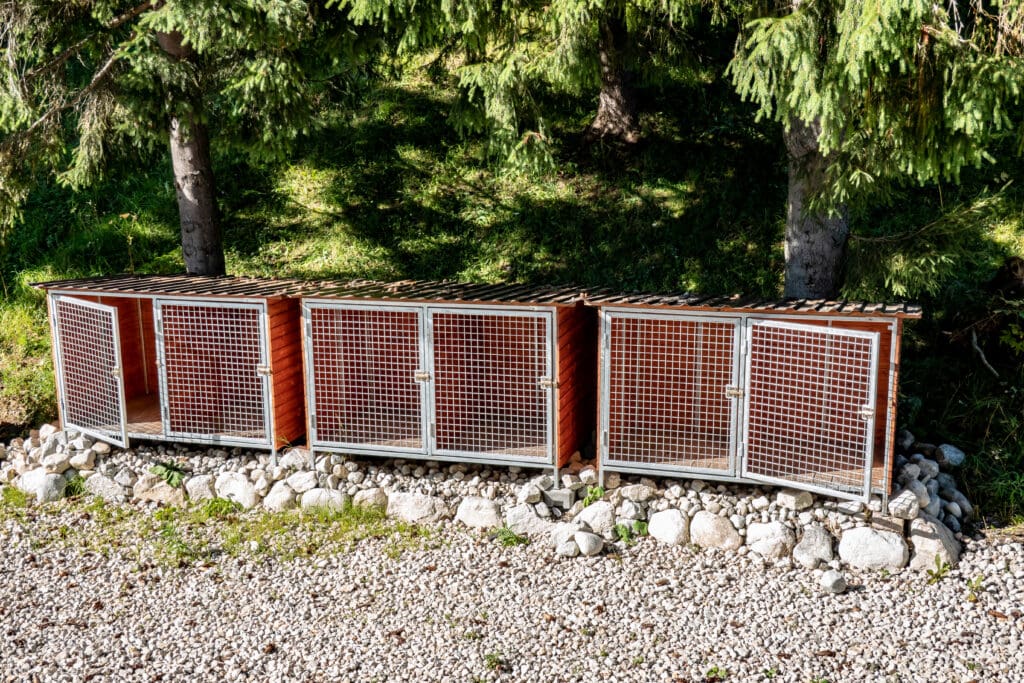
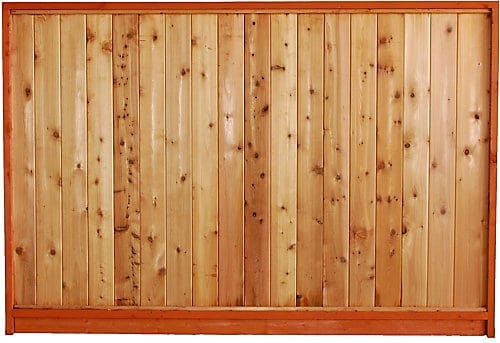
2. Kickboard – An Essential Safety Feature
A kickboard is a board that’s installed across the bottom of a fence. It’s often used to prevent rot by elevating the pickets. Some people also like them for aesthetic reasons. For small dogs who might see the gap under your fence as an escape route to the world beyond, a well-placed kickboard can serve as an effective fence barrier, ensuring your pint-sized explorer stays within the boundaries of your backyard.
3. Puppy pickets – A Dog Fence for Small Breeds
Aluminum fences with widely spaced pickets provide an elegant appearance that many homeowners appreciate, but they may not serve as the most secure solution when it comes to the smaller members of your furry family. Enter puppy pickets: these are specialized panels, also known by terms such as dog fence rolls or puppy panels, designed to fit snugly at the bottom of your fence. Their closely spaced stakes create a no-escape zone for your adventurous little dog, ensuring that even the most Houdini-esque pups remain safely inside the backyard. With puppy pickets, you can rest easy knowing that your small dog is safely frolicking within the confines of their outdoor space.
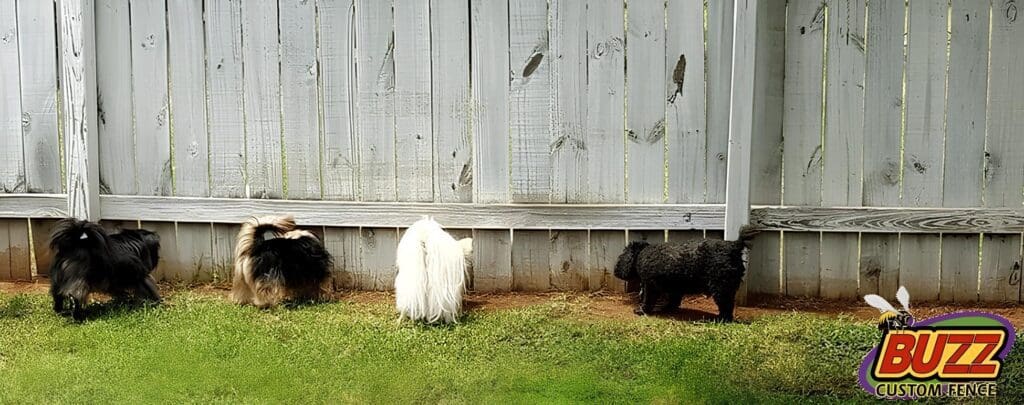

4. Dog window – A Visual Treat for Your Fenced-in Furry Friend
Everybody likes a view and a dog window can transform an ordinary dog fence into a source of stimulation and enjoyment for your pet. A dog window is a plastic bubble that sticks out from your fence so your dog can see what’s going on. When installing a dog window, it’s important to select the right size for your dog’s face and mount it at an appropriate height, making sure they can comfortably survey their surroundings. Not only does this improve your dog’s well-being by satisfying their curiosity, but it also adds an intriguing design element to your dog fence system, affirming that practical solutions can also be visually appealing.
5. Dog run with gate
A dog run is a nice compromise between letting your dog run amok in your yard, and denying him unsupervised outside access. The run is a secured area, usually made of metal or wood, that contains your dog while giving them plenty of room to move. A dog run should be spacious enough for your dog to play, rest, and explore without feeling restricted. For small to mid-sized breeds, aim for dimensions that allow ample room, starting at a minimum of three feet wide by ten feet long and with an appropriate height, typically around six feet. Larger dogs, especially those weighing over 100 pounds, will benefit from even more room, with runs that are at least four feet wide. The inclusion of a dog run represents a commitment to your pet’s happiness and training, ensuring they have a safe, designated area to spend their energy.
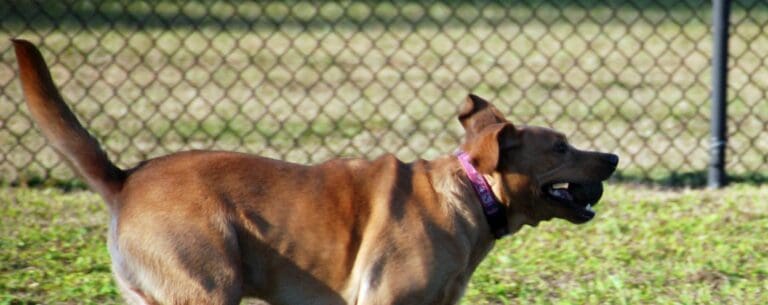
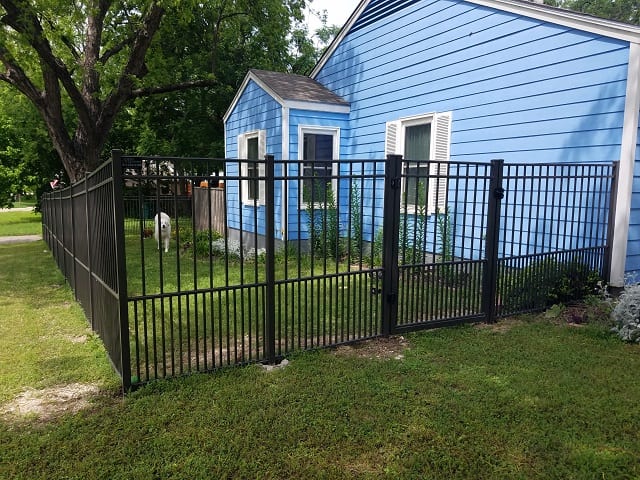
6. Custom-build iron – An Elegant Dog Fence Solution
If you’re in the market for something new, we can custom-build a beautiful iron fence with your dog in mind. Depending on the breed and size of your canine, you might be able to use dog fence kits with standard picket spacing. But if your dog is on the ultra-petite side—such as a Yorkie or a Papillion—you may need pickets installed closer together. To determine picket spacing, measure your dog at the widest part of their body, and plan to put the pickets a little closer together than that to prevent Houdini from wiggling through.
7. Double-sided fence
A double-sided fence makes your yard extra-private, and can even muffle sound. If your dog is reactive and prone to barking at every passerby, be it a person, squirrel, or another dog, a double-sided fence might be the perfect addition to your safety dog fences. By minimizing visual triggers and dampening outside sounds, a double-sided fence can contribute to a more peaceful and calm space for your dog, helping to decrease barking and anxiety.
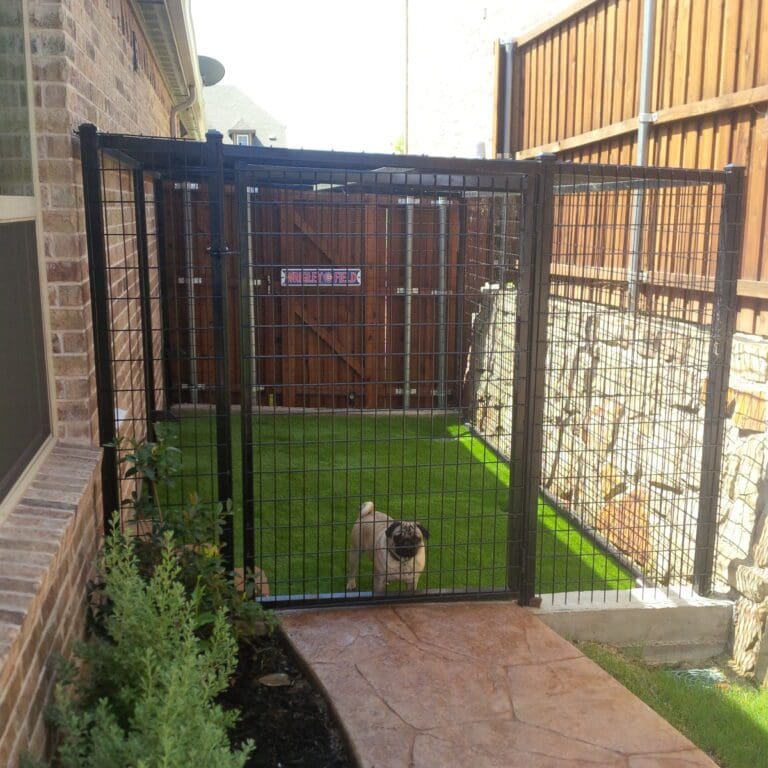
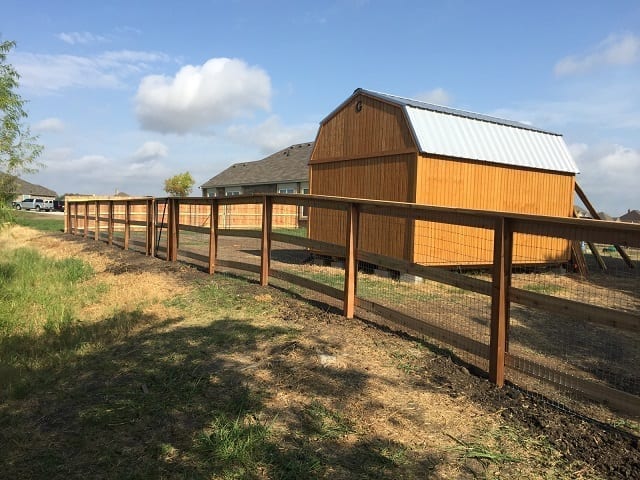
8. No-climb wire – An Impenetrable Dog Fence for Climbing Canines
When it comes to securing a backyard for those canine athletes who see fences as a challenge to be conquered, no-climb wire is the solution. This type of wire is incredibly durable and designed not to buckle or yield under pressure, ensuring that it acts as an effective safety dog fence for even the most agile of climbers. By adding no-climb wire to the top of your dog fence, you can discourage your dog from attempting their acrobatic escape acts. While we pride ourselves on the resilience of our dog fence solutions, should your canine companion decide to take up pole vaulting, we’ll salute their determination while suggesting a firm ‘stay’ command might be in order!
Call us Today
At Buzz, we understand how much you care about the dogs in your family. Give us a call today and we can make Fido’s backyard territory a safer, more aesthetic and enjoyable place to play for the whole family.
Frequently Asked Questions
Buzz Custom Fence offers various fencing options suitable for pets, ensuring their safety and containment.
Yes, temporary dog fences are available and are ideal for renters or homeowners planning to move soon. They require no cement pouring or digging and can be easily installed.
A kickboard is a board installed across the bottom of a fence. It prevents rot by elevating the pickets and can also help contain small dogs that might try to chew or squeeze their way under the fence.
Consider adding puppy pickets (also known as puppy bars or puppy panels). These are two steel panels with closely spaced stakes that prevent small dogs from escaping.
A dog window is a plastic bubble that protrudes from your fence, allowing your dog to see outside. It provides your pet with a view of the outdoor surroundings.
A dog run is a secured area, typically made of metal or wood, that provides a contained space for your dog to exercise and move around. It’s a compromise between letting your dog roam freely in the yard and restricting outside access.
Yes, Buzz Custom Fence offers custom-built iron fences designed with your dog’s breed and size in mind. Picket spacing can be adjusted based on your dog’s size.
A double-sided dog fence that offers extra privacy and can muffle sound. It’s ideal for dogs that bark at every passerby, helping reduce barking and keep them calm.
Consider adding no-climb wire to your fence. This strong wire doesn’t give when pushed or leaned on, preventing dogs from climbing over the barrier.
Contact Buzz Custom Fence for more details and a free estimate.




